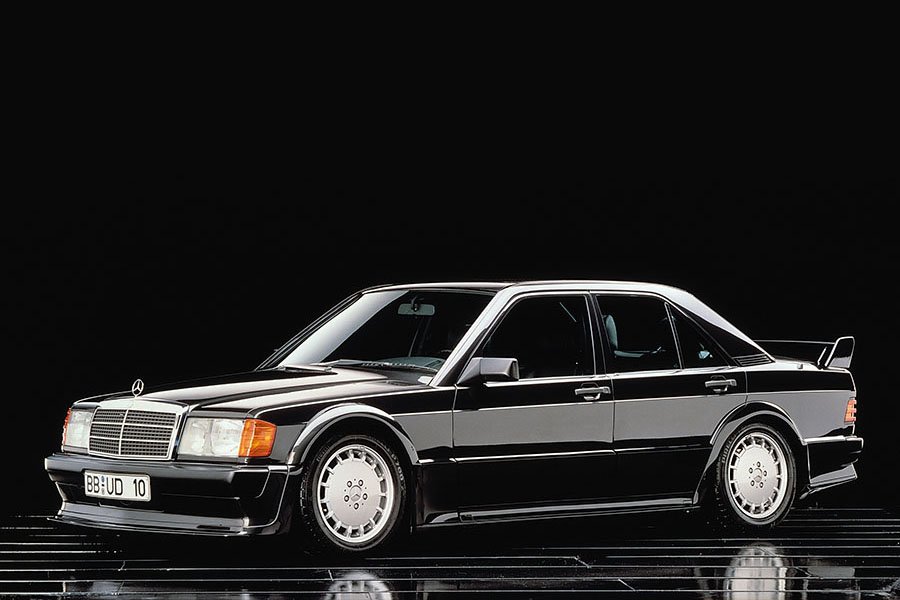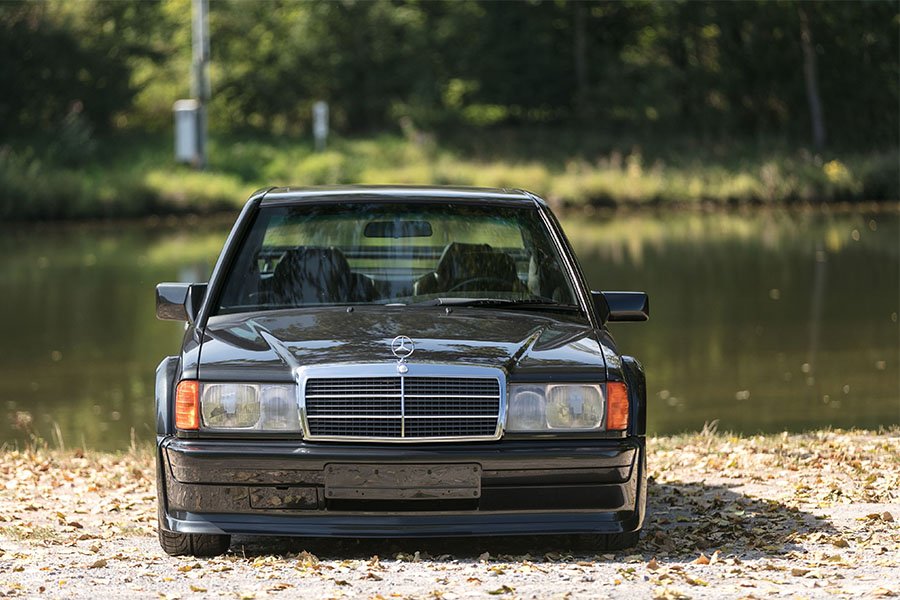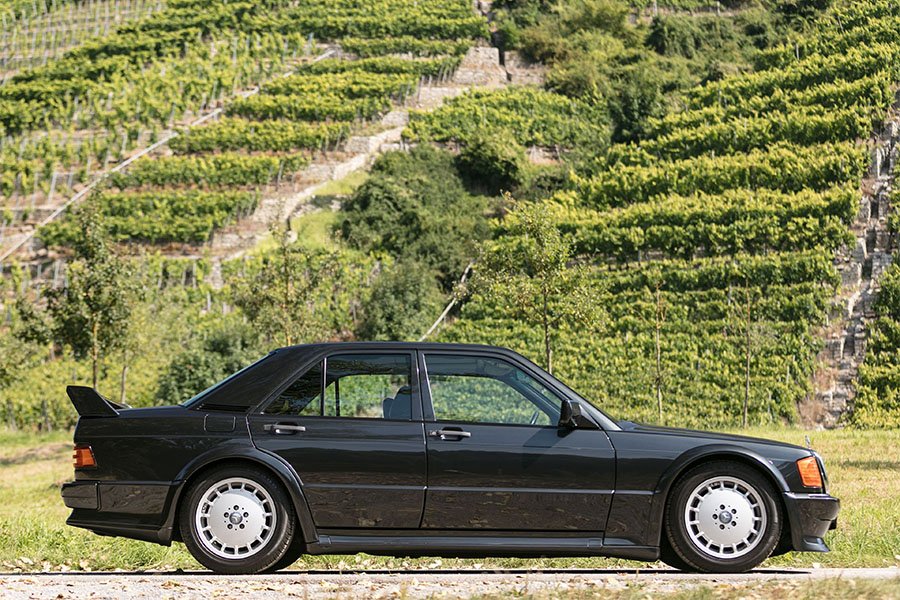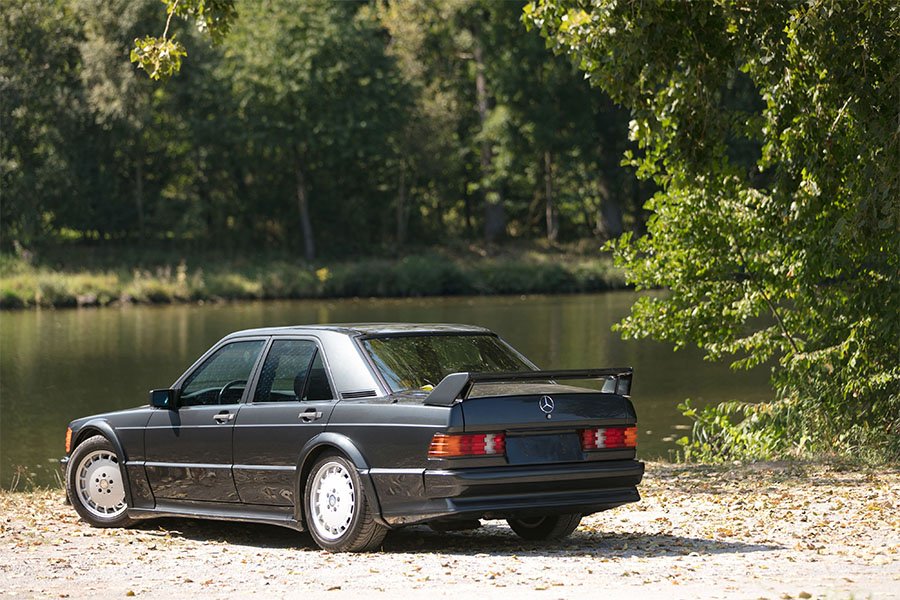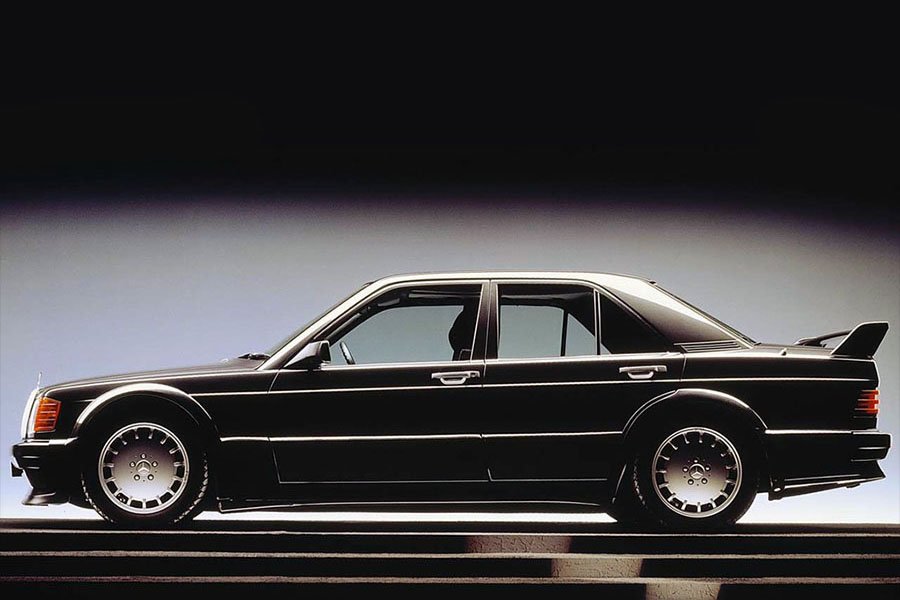Guide: Mercedes-Benz W201 190 E 2.5-16 Evolution 1 - a Historical & Technical Appraisal
/BACKGROUND
Although Mercedes’ Cosworth-tuned 190 had initially been conceived for rallying, the model ultimately became best known for its exploits in the Deutsche Tourenwagen Meisterschaft (DTM).
The DTM’s inaugural 1986 season yielded two wins for the W201. That year, Volker Weidler went on to claim second place in the overall standings driving a 190 for Helmut Marko’s team (Marko RSM).
For 1987, the Marko RSM squad got some backing from AMG. However, BMW’s new E30 M3 and the Ford Sierras (initially in XR4 and then RS Cosworth trim) proved superior. Jorg van Ommen’s third place finish in the opening race of the year at Hockenheim proved the 190’s best result of a difficult campaign.
Dramatically increased involvement from Mercedes paid dividends in 1988, especially after the Sierra Cosworths had their performance strangled by the rule makers. In addition to a fully-fledged AMG entry, teams like Snobeck Racing Service and BMK Motorsport joined Marko RSM running the 190.
Johnny Cecotto took two wins for the AMG Mercedes team (at Avus and the Hungaroring). Despite not taking a win all season, Roland Asch finished second in the standings thanks to greater consistency in his BMK Motorsport entry
As part of a big push for the 1989 DTM season, Mercedes upped the ante by launching a bigger, more powerful 2.5-litre version of the 16 valve 190 at Frankfurt Motor Show in September 1988.
However, the new 2.5-litre car was just the starting point for 1989 as Mercedes had something even more impressive up their sleeve.
Group A regulations permitted further developed Evolution variants of a homologated car to be produced. The first Evolution was permitted from the initial date of homologation and then every twelve months thereafter. With this in mind, Mercedes created the 190 E 2.5-16 Evolution 1 which would serve as the basis for their 1989 DTM cars.
The Evolution 1 was unveiled at the Geneva Motor Show in March 1989. It most notably came with an uprated aero pack, an enhanced engine, beefier brakes and bigger wheels in order to homologate similar features for the 1989 DTM cars.
CHASSIS
Compared to the regular 2.5-16, the Evolution 1 used stiffer springs and shocks. A switch in the cockpit allowed the ride height to be adjusted electronically. In standard configuration, the new car’s ride height was 19mm lower than the non-Evo variant.
Bigger brakes discs sourced from the new R129 500 SL were used at either end. The fronts went from 284mm to 300mm while those at the back went from 258mm to 278mm.
The Evolution 1’s 8 x 16-inch wheels were also imported from the SL. They were an inch wider and an inch taller than before and originally came shod with Continental Sport tyres.
Track dimensions were 14mm wider at the front and 24mm wider at the rear.
Like the 2.3-16 and 2.5-16, each Evolution 1 started life as a standard 190 pressed steel bodyshell. The wheelbase measured 2665mm.
Front suspension comprised a MacPherson strut and separate spring arrangement. The back end used a five multi-link layout.
Anti-roll bars were fitted at either end along with anti-dive and anti-squat geometry.
All three 16-valve variants ran harder-than-normal bushings, a self-levelling rear axle, a quick steering rack and a special 70-litre tank (fitted over the rear axle).
ENGINE / TRANSMISSION
Unlike the regular 2.5-16 (which used a Type M102 E 25.2 motor), the Evolution 1 came with an uprated Type M 102 991 inline four cylinder engine - a trick big bore short stroke version that was much more responsive and offered superior tuning potential.
The cylinder bores were increased in diameter from 95.5mm to 97.3mm. Stroke was shortened from 87.2mm to 82.8mm. This gave an overall displacement of 2463cc which represented a 35cc reduction over the 2498cc original.
Mercedes also fitted a sports exhaust and allowed the engine to rev higher than before.
Peak output figures for the two engines offered were officially unchanged:
The RUF version with no cat produced 204bhp at 6750rpm and 177lb-ft at 5000rpm.
The cleaner KAT version produced 194bhp at 6750rpm and 173lb-ft at 5000rpm.
Despite such claims, it was widely known that the Evolution 1 motors were significantly more powerful than Mercedes suggested.
Elsewhere, the rest of the specification was carried over from the standard 2.5-16; these motors had a cast-iron block, a DOHC 16-valve light alloy cylinder head, mechanical valve lifters, a 9.7:1 compression ratio, wet-sump lubrication and Bosch KE-Jetronic fuel-injection.
The only transmission-related upgrade was a shorter rear axle ratio to give quicker acceleration (3.46:1 instead of 3.27:1).
Unlike the standard 2.5-16, the Evolution 1 could not be ordered with an automatic gearbox. Instead, only the five-speed manual Getrag dog-leg unit was used. As per the base model, this had its own oil cooler.
Transmission was through a single plate clutch and Mercedes’ electronically controlled Anti-Slip Differential (ASD).
ASD was a hydraulically locking differential that maximised traction. The electronic control allowed varied amounts of differential lock from the standard 15% right up to 100%. However, it was not a traction control system in that it did not prevent wheel spin. Activation of the ASD system was indicated by an illuminating amber triangle housed within the speedometer.
BODYWORK
Cosmetically, the Evolution 1 was enhanced with a handsome new aero kit that comprised a deep front spoiler complete with chin splitter. The new rear spoiler had an adjustable central plane, two inboard pylons and stabilising endplates.
Brawny wheelarch extensions were fitted to accommodate the bigger wheels. Deep new side skirts accentuated the Evolution 1’s already lower ride height.
Overall, this was easily the best looking 190 yet and appeared much more cohesive than the subsequent Evolution 2 with its wild tacked on addenda.
INTERIOR
Inside, the Evolution 1 was exactly the same as the standard 2.5-16.
These cars came with a small diameter leather steering wheel, a custom rev counter, a series of extra centre console-mounted gauges and more heavily bolstered sports seats front and back.
Behind the four-spoke steering wheel was a curved instrument binnacle that was neatly integrated with the rest of the dash. A large speedometer was flanked to the right by a slightly smaller rev counter inset with an analogue clock. To the left was a combined gauge for fuel level, water temperature, oil pressure and fuel economy.
Two additional read outs (an ammeter, digital stop watch and oil temperature gauge) were housed in the centre console underneath the ventilation controls and audio system.
All cars came with a Zebrano wooden insert for the transmission console.
Black leather was used to upholster the seat bolsters. The seat centres were trimmed in checked fabric to match the door panels. A mix of hard-wearing soft-touch black plastic and vinyl was used pretty much everywhere else.
As per most Mercedes of this era, the standard equipment level was quite basic.
OPTIONS
Only one colour was available for the Evolution 1: Blue-Black Metallic.
A new option was the AMG Power Pack which boosted output to 225bhp at 7200rpm and 177lb-ft at 5500rpm. A sports exhaust system was also included.
Other optional extras included anti-lock brakes, leather upholstery, air-conditioning, electric windows (front only or front and rear), an electric sunroof, tinted glass, an outside temperature gauge, driver airbag, electric aerial, rear headrests, headlight wash/wipe, a higher capacity battery and rear speakers.
Buyers could also specify electric front seats, electric front seats with memory function or electric heated seats.
WEIGHT / PERFORMANCE
The Evolution 1 weighed 1320kg which was 80kg less than the standard 2.5-16.
The RUF and KAT versions had unchanged top speeds of 148mph and 145mph respectively.
However, thanks to the shorter rear axle ratio, 0-62mph times were much quicker than before: 6.4 and 6.5 seconds respectively.
PRODUCTION
Mercedes built 502 examples of the Evolution 1 between March and May of 1989. All were left-hand drive.
Around 60 cars are understood to have been equipped with the optional AMG Power Pack.
COMPETITION HISTORY
The 1989 DTM championship comprised eleven rounds with double headers at each event.
AMG driver Klaus Ludwig took five wins (one at Hockenheim, two at Diepholz and two at the Nurburgring). AMG’s Kurt Thiim scored two wins (at Mainz Finthen and the Norisring) while Roland Asch claimed a single victory (at Mainz Finthen for MS Jet Racing).
Best-placed of the Mercedes drivers in the final standings was Kurt Thiim who claimed fourth. BMW’s Roberto Ravaglia was crowned the 1989 champion.
Text copyright: Supercar Nostalgia
Photo copyright: Mercedes-Benz - https://www.mercedes-benz.com
